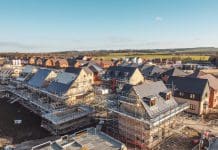A new way to gain planning permission has arrived today (1 June), applications for permission in principle (PIP) for small housing developments can now be made to local authorities in England
The Planning Portal has the forms set up for what has been described as one of the most noteworthy changes to the planning system since outline permission was introduced 60 years ago.
The scope of permission in principle is limited to location, land use and the amount of development. Unless sites are subject to Environmental Impact Assessments or habitats legislation, any site can be considered for PIP for minor developments of up to nine homes and under 1,000 sqm of commercial floor space on a site of less than one hectare. Irrespective of the mix, the main purpose of the development must be housing.
Once PIP is established, full planning permission requires only technical details consent (TDC).
Legislation for permission in principle was passed two years ago, with the policy detail evolving in parallel with the government’s ambitions for brownfield registers of land suitable for housing. PIP was conceived as an affordable and modest means for landowners and developers to establish whether a site is regarded as suitable for housing.
In addition, local authorities in England have been able to assign PIP to sites in their brownfield registers, which they were required to publish by the end of 2017. The registers come in two parts: part one for brownfield sites regarded as suitable for housing development, part two with sites already given PIP and requiring only TDC. There is also a plan to identify sites with PIP in local and neighbourhood plans in the future.













